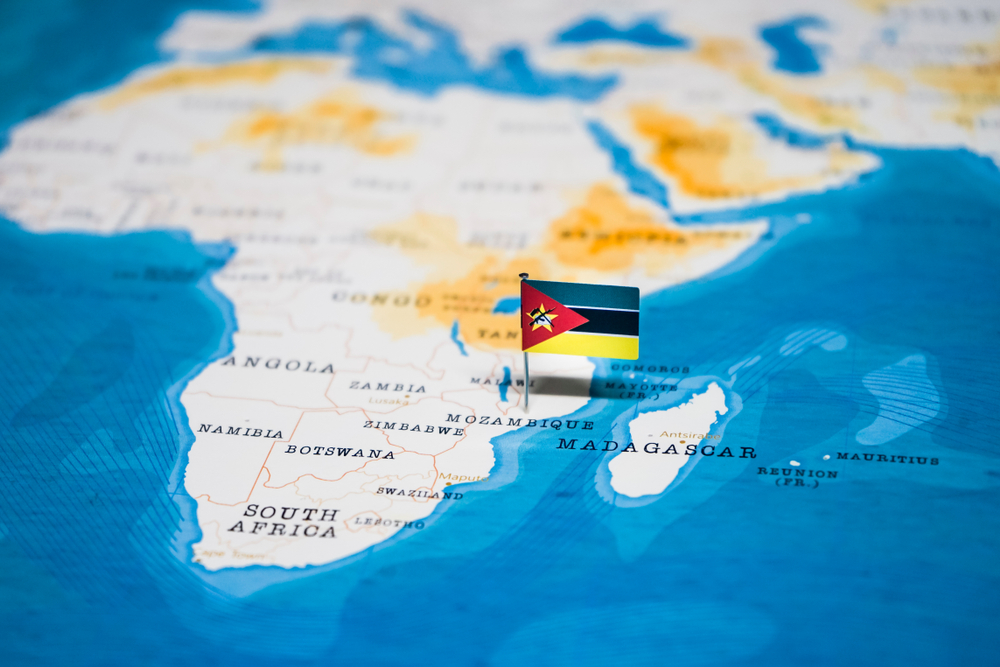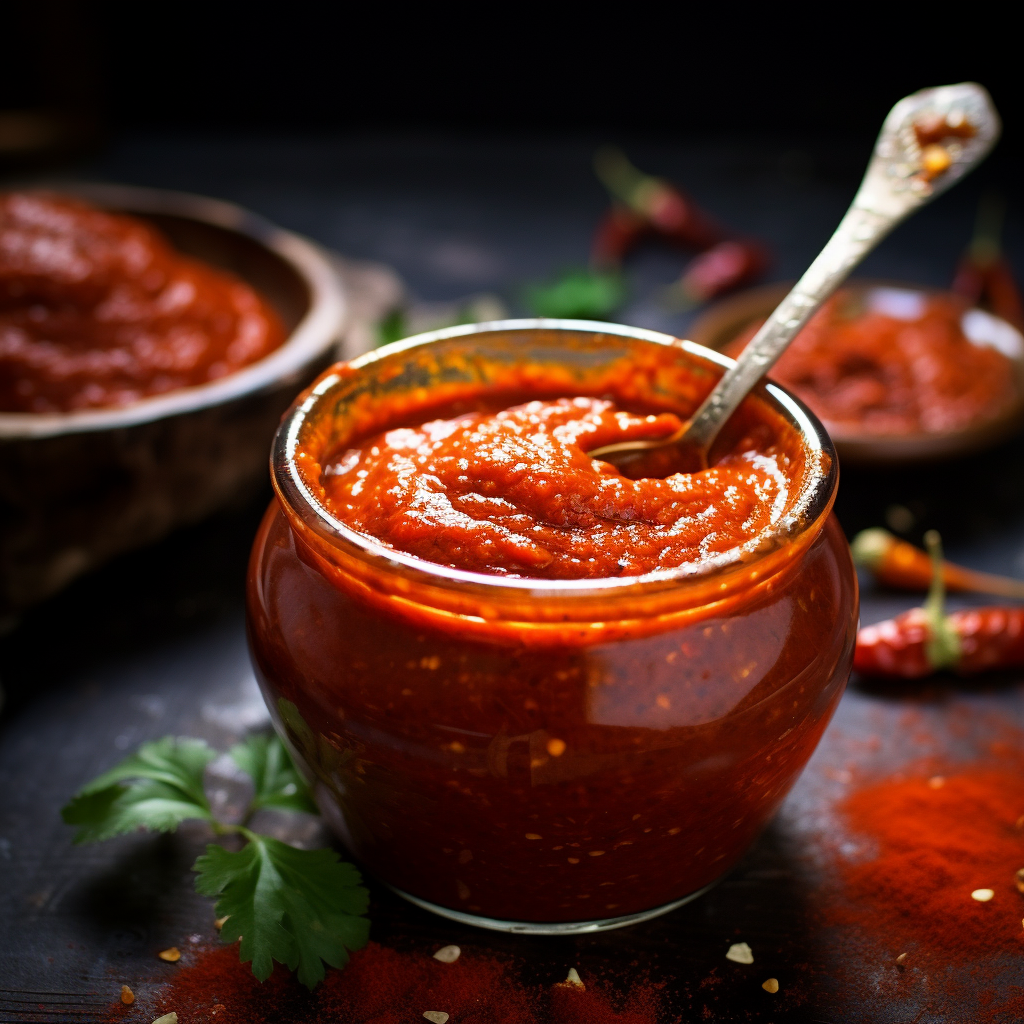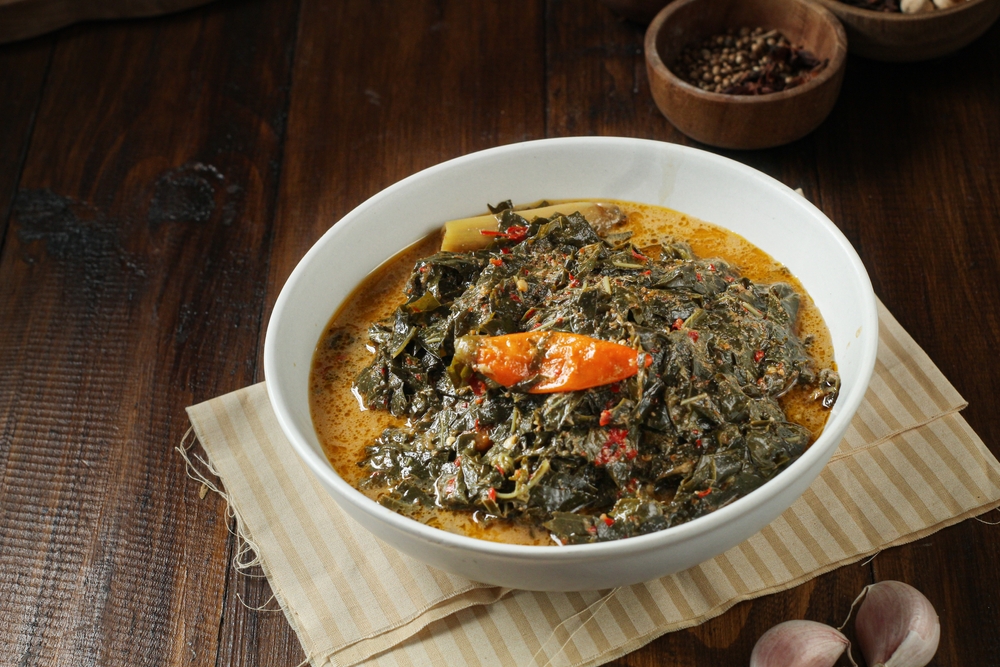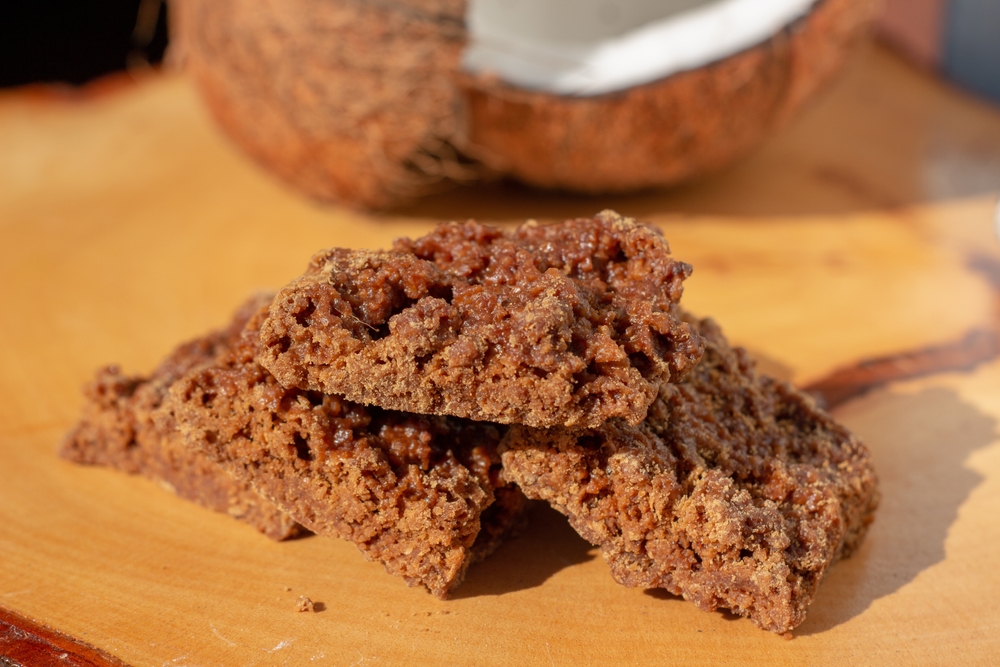Welcome to the vibrant world of Mozambican cuisine, where the flavors of the coast and the traditions of Africa come together in a spicy dance on your taste buds. This exotic culinary heritage is a rich tapestry of flavors, ingredients, and cooking techniques that have been passed down through generations, creating a unique and diverse gastronomic experience.
One of the key ingredients that sets Mozambican cuisine apart is piri-piri, a fiery chili pepper that adds a distinct heat and flavor to many dishes. In this blog post, we will explore the origins and cultural significance of piri-piri, as well as share some delicious recipes for marinades and sauces that showcase its versatility.
As Mozambique is blessed with a long coastline along the Indian Ocean, it’s no surprise that seafood plays a prominent role in the local cuisine. From the famous Mozambican prawns to traditional fishing methods and vibrant seafood markets, we will delve into the treasures that the ocean has to offer and explore the various cooking techniques used to prepare these delectable dishes.
| Typical Mozambican Culinary Delights | |
|---|---|
| Main Dishes | Signature Spices & Ingredients |
| Galinha à Zambeziana (Piri-Piri Chicken) | Piri-Piri (Bird’s eye chili) |
| Matapa (Cassava Leaf Stew) | Coconut milk |
| Xima (Maize Porridge) | Cassava flour |
| Cocada Amarela (Coconut Dessert) | Sugar cane |
| Mozambican Prawns | Garlic |
| Caldeirada (Fish Stew) | Lemon or lime |
| Frango Grelhado com Piri-Piri (Grilled Chicken with Piri-Piri) | Red wine vinegar |
| Badjias (Bean Cakes) | Cardamom |
No exploration of Mozambican cuisine would be complete without a taste of Galinha à Zambeziana, a traditional chicken dish marinated in a flavorful blend of spices and cooked to perfection. We will uncover the secrets behind the craft of marinating and cooking this beloved dish, as well as discover its significance in celebrations and the modern twists that have been added over time.
Staple foods form the foundation of every Mozambican meal, and we will explore some of the most commonly used ingredients such as xima, a maize porridge that accompanies almost every dish, as well as cassava and rice dishes that add depth and flavor to the cuisine.
For those seeking vegetarian options, Mozambique has a wide range of delicious offerings. From matapa, a cassava leaf stew, to dishes featuring pumpkin and local vegetables, and bean and legume-based creations, there is no shortage of vegetarian delights to be discovered.

The colonial legacy of Portuguese influence is also evident in Mozambican cuisine, with the introduction of new ingredients and the fusion of African and Portuguese culinary techniques. We will explore this fascinating culinary history and how it has shaped the cuisine we know today.
No culinary journey is complete without indulging in some refreshing beverages, and Mozambique has its own unique offerings. From the iconic Mozambican rum, Tipo Tinto, to local teas and herbal brews, and a variety of non-alcoholic refreshments and juices, there is something for everyone to sip and savor.
And finally, we cannot forget about desserts. Mozambican cuisine has an array of sweet treats that are sure to satisfy any sweet tooth. From coconut-based sweets and pastries to Portuguese-inspired desserts and delicacies made with local fruits and honey, we will explore the delightful world of Mozambican desserts.
Join us on this culinary adventure as we explore the vibrant flavors, rich traditions, and mouth-watering delights of Mozambican cuisine. Get ready to embark on a spicy dance of coastal delights and African tradition that will leave you craving more.
Piri-Piri: The Fiery Soul of Mozambican Cuisine
Piri-Piri, with its fiery heat and distinctive flavor, is considered the soul of Mozambican cuisine. In this section, we will delve into the origins and cultural significance of piri-piri, explore its various uses and recipes, and understand how this spice has influenced the local dishes of Mozambique.
Revel in the fiery passion of Mozambique by understanding Piri-Piri, not just as a sauce but as a true culinary and cultural staple of the country.

Origins and Cultural Significance of Piri-Piri
Piri-piri, also known as African bird’s eye chili, has its roots in the tropical regions of Africa. The spice gets its name from the Swahili word “piri-piri,” which means “pepper-pepper,” emphasizing its spicy nature. It is believed that Portuguese explorers brought chili peppers from the Americas to Africa during the 15th and 16th centuries, and from there, it spread throughout the continent.
In Mozambique, piri-piri has become an integral part of the culinary landscape. It is not only used for its fiery flavor but also holds cultural significance. The spice is believed to have medicinal properties, providing relief from various ailments. Additionally, piri-piri is associated with strength, vitality, and passion, making it an essential ingredient in celebratory and festive dishes.
Recipes: From Marinades to Sauces
Piri-piri is incredibly versatile and can be used in a variety of ways in Mozambican cuisine. One popular use is as a marinade for meat, poultry, and seafood. The combination of piri-piri, garlic, lemon juice, and other spices infuses the ingredients with a delightful heat and flavor. Marinated dishes are often grilled or roasted to perfection, allowing the piri-piri to meld with the natural juices of the meat or seafood.
Another common application of piri-piri is in the creation of flavorful sauces. These sauces can be used as a condiment or dipping sauce, adding a spicy kick to any dish. Piri-piri sauce typically combines the chili peppers with vinegar, herbs, and spices, resulting in a tangy and fiery accompaniment that enhances the flavors of the food.
The Spice’s Influence on Local Dishes
Piri-piri has had a profound influence on the development of Mozambican cuisine. Its intense heat and unique flavor profile have become synonymous with the local palate. Many traditional Mozambican dishes incorporate piri-piri to add depth, spiciness, and a touch of excitement.
From grilled prawns marinated in piri-piri sauce to piri-piri chicken, where the spice is rubbed onto the meat before it is cooked, the presence of piri-piri is unmistakable. It is also used in stews, rice dishes, and even in the preparation of vegetables and vegetarian dishes, providing a fiery kick and an aromatic essence to the cuisine.
As you embark on your culinary exploration of Mozambican cuisine, be prepared to experience the fiery soul of piri-piri and the way it weaves its magic into the diverse flavors of this coastal paradise.

Seafood in the Mozambican Cuisine: Treasures of the Indian Ocean
Seafood holds a special place in Mozambican cuisine, thanks to the country’s long coastline along the Indian Ocean. In this section, we will dive into the world of Mozambican seafood, exploring the famous Mozambican prawns, traditional fishing methods, vibrant seafood markets, and the various cooking techniques that showcase the treasures of the ocean.
Experience the coastal bounty of Mozambique through its exquisite Prawn Recipes, where the ocean’s freshness meets a burst of spices.
The Famous Mozambican Prawns
Mozambican prawns have gained international acclaim for their exceptional flavor and size. These succulent and juicy prawns are a true delicacy and a highlight of Mozambican cuisine. In this section, we will explore the origins of Mozambican prawns, their unique characteristics, and the different ways they are prepared and enjoyed.
Traditional Fishing Methods and Markets
To truly understand the essence of Mozambican seafood, it is important to delve into the traditional fishing methods employed by local fishermen. Mozambique’s coastal communities have a deep-rooted connection to the ocean, and their sustainable fishing practices ensure the availability of fresh seafood. We will explore the techniques used, such as traditional wooden dhow boats and handcrafted nets, and the cultural significance of fishing in Mozambican society.
Additionally, we will take a trip to the vibrant seafood markets, where locals gather to buy and sell the day’s catch. These bustling markets offer a fascinating glimpse into the seafood culture of Mozambique, with an array of fish, shellfish, and other ocean treasures on display. We will uncover the variety of seafood available and the lively atmosphere that surrounds these markets.

Cooking Techniques: Grills, Stews, and Curries
Mozambican cuisine showcases the versatility of seafood through various cooking techniques. Grilling is a popular method, allowing the natural flavors of the seafood to shine while imparting a smoky and charred essence. We will explore the art of grilling Mozambican prawns and other seafood, highlighting the marinades and spices used to enhance the flavors.
Stews and curries are another prominent feature of Mozambican seafood cuisine. These slow-cooked dishes infuse the seafood with rich and complex flavors, often incorporating coconut milk, spices, and local ingredients. We will delve into traditional seafood stews and curries, uncovering the regional variations and the use of spices like piri-piri to create a harmonious balance of flavors.
Get ready to savor the treasures of the Indian Ocean as we explore the world of Mozambican seafood. From the famous Mozambican prawns to the traditional fishing methods and vibrant seafood markets, and the mouth-watering cooking techniques, this section will immerse you in the richness of Mozambique’s coastal delights.
Galinha à Zambeziana (Chicken Zambeziana)
Galinha à Zambeziana, also known as Chicken Zambeziana, is a beloved dish in Mozambican cuisine. In this section, we will explore the craft of marinating and cooking this flavorful chicken dish, discover its significance in celebrations and traditional gatherings, and learn about modern twists that have been added to this traditional favorite.
Indulge in the fiery flavors of Galinha à Zambeziana, a spicy chicken dish that encapsulates the zest of Mozambique.
The Craft of Marinating and Cooking
Galinha à Zambeziana is renowned for its complex and aromatic flavors, achieved through a carefully crafted marinade. We will delve into the traditional marinade ingredients, which often include piri-piri, garlic, lemon juice, ginger, and a blend of spices. The chicken is marinated for hours or even overnight, allowing the flavors to penetrate the meat and create a harmonious blend.
Navigate the spice trails of Mozambique by diving into the many Variations of Piri-Piri, the chili sauce that’s become synonymous with the nation.
Once marinated, the chicken is typically cooked using various methods. Grilling is a popular choice, as it imparts a smoky and charred flavor to the meat. However, it can also be roasted or cooked in a traditional clay pot, each method lending its unique character to the dish. We will explore the different cooking techniques and the impact they have on the final result.
The Dish’s Place in Celebrations
Galinha à Zambeziana holds a special place in Mozambican celebrations and traditional gatherings. It is often prepared for festive occasions such as weddings, birthdays, and family reunions. The dish symbolizes abundance, hospitality, and togetherness, and is a centerpiece of communal feasts.
We will delve into the cultural significance of Galinha à Zambeziana, exploring how it brings people together and fosters a sense of community. We will also discover the rituals and traditions associated with its preparation and consumption during these joyous occasions.
Modern Twists on a Traditional Favorite
While Galinha à Zambeziana has deep roots in tradition, modern chefs and home cooks have put their own twists on this beloved dish. We will explore some of the contemporary variations that have emerged, such as adding new ingredients or experimenting with different cooking techniques. These modern interpretations pay homage to the traditional flavors while infusing the dish with a touch of innovation and creativity.
Whether you are enjoying Galinha à Zambeziana as part of a celebratory feast or exploring its modern adaptations, this section will provide a comprehensive understanding of this iconic Mozambican dish. Get ready to tantalize your taste buds with the aromatic flavors and succulent textures of Chicken Zambeziana.
Staple Foods In The Mozambican Cuisine: A Base for Every Meal
Staple foods form the backbone of Mozambican cuisine, providing a solid foundation for every meal. In this section, we will explore the essential ingredients that are considered staples in Mozambican cooking. From xima, the ubiquitous maize porridge, to cassava and rice dishes, we will uncover the importance of these foods and their role in creating satisfying and hearty meals.
Xima: The Ubiquitous Maize Porridge
Xima, also known as ugali or sadza in other African countries, is a staple food in Mozambique. Made from maize meal, xima is a thick and smooth porridge that is enjoyed with various accompaniments. We will delve into the process of making xima, from selecting the right maize meal to the cooking techniques required to achieve the perfect consistency. Additionally, we will explore the cultural significance of xima and its role in communal dining.
Venture into the heart of Mozambique’s culinary staples with Xima, a versatile maize dish that complements a variety of accompaniments.
Cassava and its Many Forms
Cassava, a starchy root vegetable, is another important staple in Mozambican cuisine. Known for its versatility, cassava can be prepared in various forms to create dishes that range from hearty side dishes to main courses. We will explore the different ways cassava is used, such as boiled, mashed, or fried, and the unique flavors and textures it brings to the table. Cassava leaves, a byproduct of the root, are also used in traditional dishes like matapa, a flavorful stew that we will explore in a later section.
Rice Dishes: From Plain to Flavorful
Rice is a commonly consumed staple in Mozambique, particularly along the coastal regions. It serves as a versatile base for many dishes and is often cooked with various ingredients to add flavor and texture. We will uncover the different types of rice used in Mozambican cuisine, from plain white rice to fragrant and spiced rice dishes like pilau. Additionally, we will explore the various ways rice is incorporated into traditional Mozambican meals, whether as a side dish or as part of a more elaborate recipe.
As we delve into the world of staple foods in Mozambican cuisine, you will discover the importance of xima, cassava, and rice as the building blocks of a satisfying meal. These essential ingredients provide sustenance and contribute to the rich and diverse flavors that define Mozambican cuisine.
Mozambique’s Cuisine Vegetarian Offerings
Mozambique’s culinary landscape offers a diverse array of vegetarian dishes that showcase the richness of local ingredients. In this section, we will explore the vegetarian offerings in Mozambican cuisine, highlighting dishes such as matapa, pumpkin-based creations, and bean and legume-based delicacies.

Matapa: Cassava Leaf Stew
Matapa is a traditional Mozambican dish that features cassava leaves as the main ingredient. These nutritious leaves are finely chopped and cooked with various spices, coconut milk, and sometimes ground peanuts. The result is a flavorful and aromatic stew that is often enjoyed with xima or rice. We will delve into the preparation of matapa, the regional variations, and its cultural significance in Mozambican cuisine.
Embrace the savory essence of Matapa, a traditional cassava leaf stew, and understand its deep roots in Mozambican households.
Pumpkin and Local Vegetables
Pumpkin is a versatile vegetable that is widely used in Mozambican vegetarian dishes. It can be cooked in various ways, from hearty stews to creamy soups or simply roasted and seasoned with spices. We will explore the different pumpkin-based creations in Mozambican cuisine and how they showcase the natural sweetness and vibrant colors of this vegetable. Additionally, we will highlight other local vegetables that are commonly used in vegetarian dishes, such as okra, eggplant, and leafy greens.
Bean and Legume-Based Dishes
Beans and legumes play a significant role in Mozambican vegetarian cuisine, providing a good source of protein and fiber. Dishes such as feijão tropeiro, a flavorful bean stew with vegetables and spices, or feijão com coco, a bean and coconut milk curry, showcase the creativity and versatility of these ingredients. We will explore the different ways beans and legumes are prepared and the unique flavors they bring to vegetarian dishes in Mozambique.
Mozambique’s vegetarian offerings are a testament to the country’s culinary diversity and the abundance of fresh and flavorful local ingredients. Whether you indulge in the rich and aromatic matapa, savor the sweetness of pumpkin-based creations, or relish the hearty bean and legume dishes, you will discover the vibrant and satisfying world of vegetarian cuisine in Mozambique.
A Colonial Legacy: Portuguese Influence on Mozambican Cuisine
The culinary heritage of Mozambique has been significantly shaped by the colonial legacy of Portuguese influence. In this section, we will explore the introduction of new ingredients, the culinary fusion of African and Portuguese techniques, and the rise of cafés and bakeries that reflect the Portuguese influence on Mozambican cuisine.
Introduction of New Ingredients
During the colonial era, Portuguese explorers brought with them a range of new ingredients that were previously unknown in Mozambique. These ingredients, such as tomatoes, potatoes, chilies, and various spices, were incorporated into the local cuisine, adding new flavors and textures to traditional dishes. We will delve into the impact of these introduced ingredients and how they have become an integral part of Mozambican culinary repertoire.
Culinary Fusion: African Ingredients Meet Portuguese Techniques
The Portuguese influence on Mozambican cuisine goes beyond just ingredients. It also encompasses the fusion of African and Portuguese culinary techniques. African cooking methods and flavors combined with Portuguese cooking techniques, such as grilling, baking, and stewing, resulted in the creation of unique and flavorful dishes. We will explore the culinary fusion that has taken place, highlighting dishes that showcase this harmonious blend of African and Portuguese influences.

The Rise of Cafés and Bakeries
Another significant aspect of the Portuguese influence on Mozambican cuisine is the introduction of cafés and bakeries. The Portuguese brought with them a rich tradition of pastry-making and coffee culture, which quickly took root in Mozambique. Cafés and bakeries became popular gathering places for locals and expatriates alike, serving up delicious pastries, cakes, and freshly brewed coffee. We will uncover the development of this café culture and the enduring legacy of Portuguese-style baked goods in Mozambique.
The colonial legacy of Portuguese influence on Mozambican cuisine has left an indelible mark on the culinary traditions of the country. From the introduction of new ingredients to the fusion of African and Portuguese techniques, and the establishment of cafés and bakeries, the Portuguese influence continues to shape and enrich the vibrant tapestry of Mozambican cuisine.
Beverages: Sips of Tradition and Modernity
Beverages in Mozambique offer a delightful blend of tradition and modernity, reflecting the diverse cultural influences and local flavors. In this section, we will explore the iconic Mozambican rum, Tipo Tinto, local teas and herbal brews, and the refreshing non-alcoholic options and juices available in the country.
Tipo Tinto: The Iconic Mozambican Rum
Tipo Tinto is a renowned Mozambican rum that holds a special place in the country’s drinking culture. Distilled from sugarcane, Tipo Tinto is known for its smoothness and distinct flavor. We will delve into the history and production process of this iconic rum, highlighting its significance in celebrations and social gatherings. Additionally, we will explore some popular cocktails and traditional drinks made with Tipo Tinto.
Dive into the spirited essence of Mozambique by exploring Tipo Tinto, the nation’s iconic rum, and the tales of its legacy.
Local Teas and Herbal Brews
Mozambique has a rich tradition of tea consumption, with various herbal brews enjoyed for their medicinal properties and soothing flavors. We will discover the different types of local teas and herbal infusions, such as lemongrass, mint, and ginger, and explore their cultural significance. Whether sipped for relaxation or for their healing properties, these teas offer a delightful taste of Mozambican tradition.
Non-Alcoholic Refreshments and Juices
For those seeking non-alcoholic options, Mozambique offers a range of refreshing beverages. From fresh fruit juices made with local tropical fruits like mango, pineapple, and passionfruit, to homemade ginger beer and refreshing coconut water, there is no shortage of thirst-quenching delights. We will explore the vibrant array of non-alcoholic refreshments available and the role they play in keeping Mozambicans hydrated and cool in the tropical climate.
Mozambique’s beverage scene is a fascinating blend of tradition and modernity. Whether you’re indulging in the iconic Tipo Tinto rum, savoring the soothing flavors of local teas and herbal brews, or enjoying the refreshing non-alcoholic options and juices, you’ll discover a vibrant and diverse world of beverages that perfectly complement the flavors of Mozambican cuisine.
Desserts: Sweetening the Mozambican Palate
Desserts in Mozambican cuisine offer a delightful array of sweet treats that satisfy the palate and highlight the richness of local flavors. In this section, we will explore the world of Mozambican desserts, from coconut-based sweets and pastries to Portuguese-inspired creations and delicacies made with local fruits and honey.

Coconut-based Sweets and Pastries
Coconut is a star ingredient in Mozambican desserts, providing a rich and tropical flavor profile. From coconut candies to coconut macaroons and cocada amarela (a coconut and egg-based dessert), we will explore the various sweet treats that showcase the versatility of this beloved ingredient. These coconut-based desserts offer a delightful combination of sweetness and texture, often with a hint of aromatic spices.
Discover the sweetness of Mozambique with the Cocada Amarela, a delightful dessert that combines coconut and egg yolk in a symphony of flavors.
Portuguese-inspired Desserts
The Portuguese colonial influence is evident in Mozambican desserts, with Portuguese-inspired pastries and sweet dishes making their mark. Traditional Portuguese treats like pastéis de nata (custard tarts) and bolo de arroz (rice cakes) have found their way into Mozambican bakeries, adding a touch of European flair to the dessert scene. We will explore these Portuguese-inspired delights and their integration into Mozambican culinary traditions.
Local Fruits and Honey Delicacies
Mozambique’s abundant tropical fruits and locally sourced honey provide the perfect ingredients for a variety of delightful desserts. From mangoes to papayas, bananas, and cashew fruit, these fruits are transformed into refreshing fruit salads, sorbets, or simply enjoyed on their own. We will also discover the use of honey in Mozambican desserts, such as drizzling it over pancakes or incorporating it into sweet puddings and cakes, adding a natural sweetness and depth of flavor.
Mozambican desserts are a celebration of sweetness and the natural bounty of the country’s ingredients. Whether indulging in coconut-based sweets, savoring Portuguese-inspired pastries, or enjoying the luscious flavors of local fruits and honey delicacies, the desserts of Mozambique are sure to leave a lasting impression on your taste buds.
Conclusions
In conclusion, Mozambican cuisine is a vibrant tapestry of flavors, blending the coastal delights of the Indian Ocean with the rich traditions of African culture. Throughout this blog post, we have dived deep into the world of Mozambican cuisine, exploring its spicy soul with piri-piri, savoring the treasures of the Indian Ocean through seafood delicacies, and discovering the cultural significance of Galinha à Zambeziana.
We have also explored the importance of staple foods such as xima, cassava, and rice, which form the foundation of every meal, and celebrated the diverse vegetarian offerings that showcase the richness of local ingredients. The colonial legacy of Portuguese influence has left its mark on Mozambican cuisine, introducing new ingredients, culinary techniques, and the rise of cafés and bakeries.
From sipping on iconic Mozambican rum, Tipo Tinto, to enjoying local teas, refreshing non-alcoholic beverages, and indulging in the sweet delights of Mozambican desserts, we have experienced the diverse beverage scene of the country.
Through this culinary journey, we have uncovered the unique flavors, cultural traditions, and innovative twists that make Mozambican cuisine so captivating. The blend of coastal spices, traditional cooking techniques, and the fusion of African and Portuguese influences creates a truly unforgettable gastronomic experience.
As you venture into the world of Mozambican cuisine, we encourage you to explore the diverse flavors, try new recipes, and embrace the warmth and hospitality that accompanies Mozambican dining. Whether you are enjoying a spicy piri-piri marinade, savoring the succulent Mozambican prawns, or indulging in a traditional dessert, Mozambican cuisine is sure to leave you with a lasting impression and a desire to continue exploring the culinary wonders of this coastal paradise.
